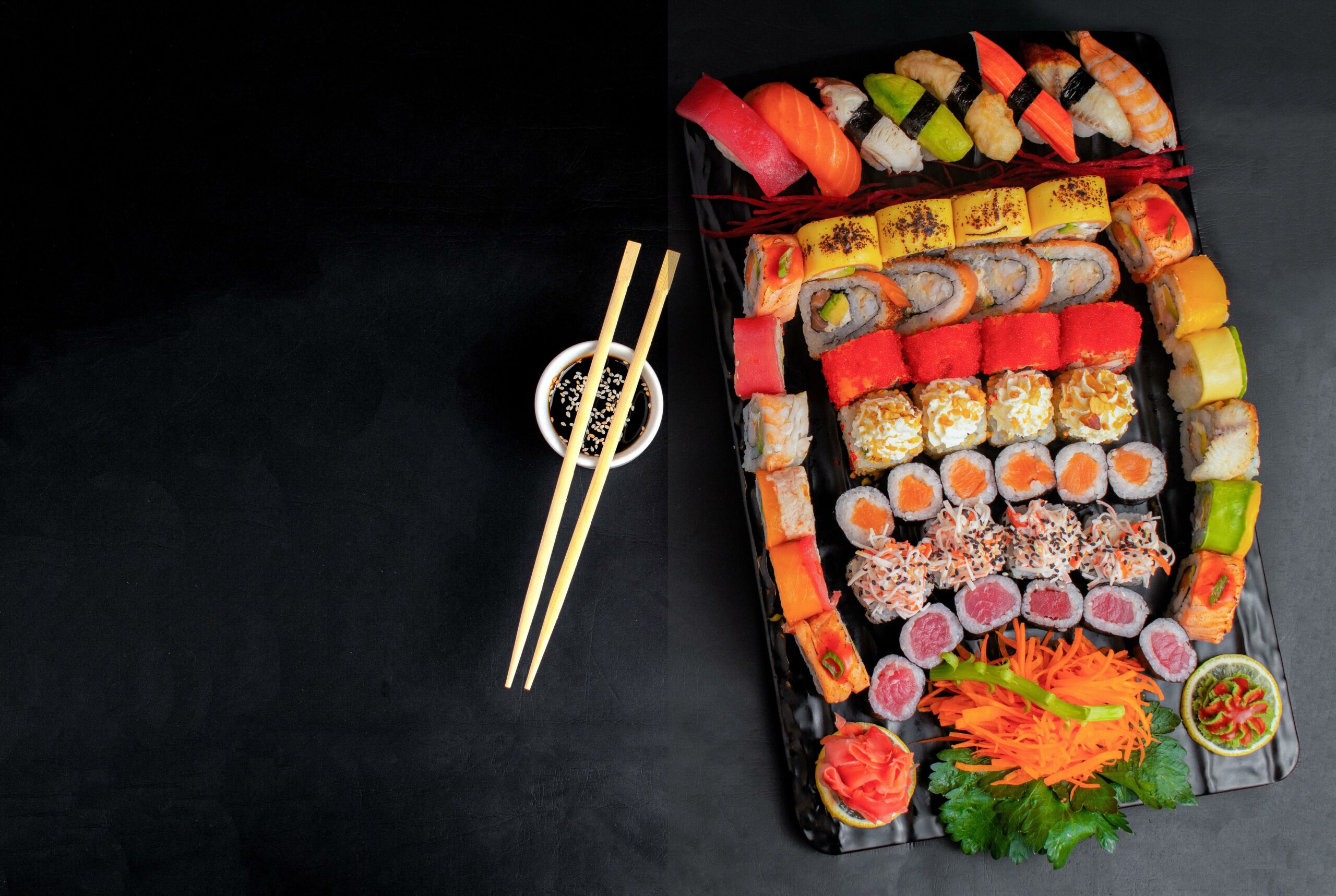Are you ready to embark on a journey through the world of sushi dining like you’ve never experienced before? Join me, a seasoned food writer with a discerning palate, as I unveil the tantalizing secrets and lesser-known facts of sushi restaurants. Get ready to indulge in a culinary adventure that will open your eyes to the hidden delights of this beloved Japanese cuisine. From the mysterious techniques employed by skilled sushi chefs to the unexpected origins of the freshest fish, I’ll take you behind the scenes and shed light on the lesser-known aspects of sushi dining. Prepare to be surprised and delightfully enlightened as we embark on a sushi escapade like no other!
Unveiling Hidden Delights: Lesser-Known Sushi Restaurant Facts
Lesser-Known Sushi Restaurant Facts
Sushi has become a globally popular cuisine, cherished for its delicate flavors and exquisite presentation. While many may consider themselves sushi connoisseurs, there are a plethora of lesser-known sushi restaurant facts that remain undiscovered. Join me as we dive into the depths of the sushi world and uncover these hidden delights. From the intriguing origins of sushi to surprising culinary techniques, prepare to be amazed!
1. Sushi’s Origins Beyond Japan
Fact: Did you know that sushi is not originally Japanese? In fact, its roots can be traced back to the Neolithic period in China. Sushi was initially created as a preservation method, using fermented rice and salted fish. Over time, this culinary tradition made its way to Japan and underwent significant transformations, ultimately becoming the sushi we know today. By highlighting this lesser-known fact, we can better appreciate the cultural exchange that has shaped sushi as we enjoy it now.
2. The True Definition of Sushi
Fact: Contrary to popular belief, the term “sushi” actually refers to the rice, not the fish. The word “sushi” itself means “vinegar rice.” This misconception stems from the widespread association of sushi with raw fish. However, sushi can be enjoyed without any fish at all, and there are various vegetarian options available. By understanding the true essence of sushi as vinegared rice, we can approach our sushi dining experiences with a fresh perspective.
3. Sushi Rice: From Trash to Essential Component
Fact: Sushi rice, or “shari,” was not always the revered ingredient that it is today. Historically, sushi chefs would discard the rice after it served its purpose of fermenting fish. However, as sushi gained popularity, chefs recognized the importance of rice quality in enhancing the overall sushi experience. They dedicated their efforts to perfecting sushi rice, eventually elevating it to an essential component of sushi. This transformation showcases the craftsmanship and dedication that sushi chefs bring to their art.
4. Lesser-Known Types of Sushi
Fact: While many are familiar with popular sushi varieties like Nigirizushi and Makizushi, several lesser-known types of sushi deserve attention. Chirashizushi, a colorful and vibrant dish featuring scattered fish and vegetables over sushi rice, offers a delightful presentation. Inarizushi, a sweet and savory sushi pocket filled with seasoned rice, brings a unique twist to traditional sushi. Oshizushi, also known as pressed sushi, showcases artistic designs and intricate flavors. Exploring these lesser-known sushi types allows us to delve deeper into the diverse world of sushi.
5. Sushi’s Unexpected Journey to Popularity
Fact: Sushi’s surge in popularity in Japan can be attributed to a devastating earthquake that struck Tokyo in 1923. The destruction led to the emergence of sushi stalls as a means of livelihood for many locals. As these sushi stalls grew in number, sushi culture became more widespread and infused with innovation. This unexpected turn of events ignited a sushi revolution, ultimately shaping the sushi dining experiences we enjoy today. It reminds us that even in times of adversity, culinary wonders can emerge.
6. The Chinese Influence on Sushi
Fact: Sushi’s journey to Japan was not solely through the Neolithic period—it has deep roots in Chinese culture as well. Chinese immigrants played a significant role in introducing sushi to Japan, bringing their culinary traditions and techniques. The combination of Chinese and Japanese influences laid the foundation for sushi as we know it today. By acknowledging these cultural connections, we gain a richer appreciation for the diverse influences that shape global cuisine.
In Summary
Unveiling these lesser-known sushi restaurant facts adds an exciting layer of depth to our sushi dining experiences. From sushi’s origins in China to the unexpected popularity boost in Japan, the world of sushi is filled with captivating stories and unique culinary techniques. Embrace these hidden delights, and let them guide you on a journey of discovering sushi’s diverse facets.
“Sushi is a blend of traditions and stories that unravel with each bite, enticing us to explore the lesser-known realms of this beloved cuisine.”
Sushi restaurants have become a global sensation, and if you’re a fan of this Japanese delicacy, you won’t want to miss out on these fascinating facts about sushi restaurants. From their rich history to the meticulous art of sushi-making, there’s always something intriguing to discover. So, grab your chopsticks and dive into the world of sushi. To uncover some of the most captivating secrets of sushi restaurants, click here – facts about sushi restaurants.
FAQ
Question 1: What are some lesser-known sushi restaurant facts?
Answer 1: Some lesser-known sushi restaurant facts include the fact that sushi is not originally Japanese, but can be traced back to the Neolithic period in China. Additionally, the term “sushi” actually refers to the rice and not the fish. Sushi rice was once considered trash but is now an essential component of sushi. There are six types of sushi, namely Chirashizushi, Inarizushi, Nigirizushi, Oshizushi, Makizushi, and Temakizushi. Sushi became popular in Japan after an earthquake in 1923 wiped out a large part of Tokyo, leading to the construction of sushi stalls and the spread of sushi culture. Traditional fermented sushi, called narezushi, is known for its strong smell. Wasabi, a common sushi condiment, might not be real in some American restaurants. Sushi can also be bought using Bitcoin in some establishments.
Question 2: What are the health benefits associated with sushi?
Answer 2: Sushi offers various health benefits. It is rich in omega-3 fatty acids, which are beneficial for heart health. Additionally, sushi is low in fat and can be a good source of vitamin A. It also provides immune-boosting properties and promotes skin health.
Question 3: How long does it take to become a sushi master?
Answer 3: Becoming a sushi master requires dedication and years of training. It typically takes about 10 years to become a sushi master, as it involves learning various techniques, understanding different types of fish, and mastering the art of sushi preparation.
Question 4: Can you provide some examples of lesser-known sushi restaurants?
Answer 4: Some lesser-known sushi restaurants include Suteki Sushi, Sushi Tei, and Sushi Donbouri. These establishments offer unique sushi dining experiences and are worth exploring for sushi enthusiasts and food lovers.
Question 5: Does sushi have any cultural influences from other countries?
Answer 5: Yes, sushi has cultural influences from other countries. It has Chinese roots and was introduced to Japan by Chinese immigrants. The spread of sushi culture in Japan was fueled by factors such as an earthquake in 1923, which led to the construction of sushi stalls, and the adoption of sushi as a popular Japanese cuisine.
- Unveiling the Enigma: Mansoureh Khojasteh Bagherzadeh’s Public Appearances & Private Life in Iran - July 18, 2025
- Unveiling the Mystery: Mansoureh Khojasteh Bagherzadeh’s Husband: A Rare Glimpse into a Private Life - July 18, 2025
- Unveiling Masoud Khamenei’s Mother: Power, Influence, and Iran’s Future - July 18, 2025
















